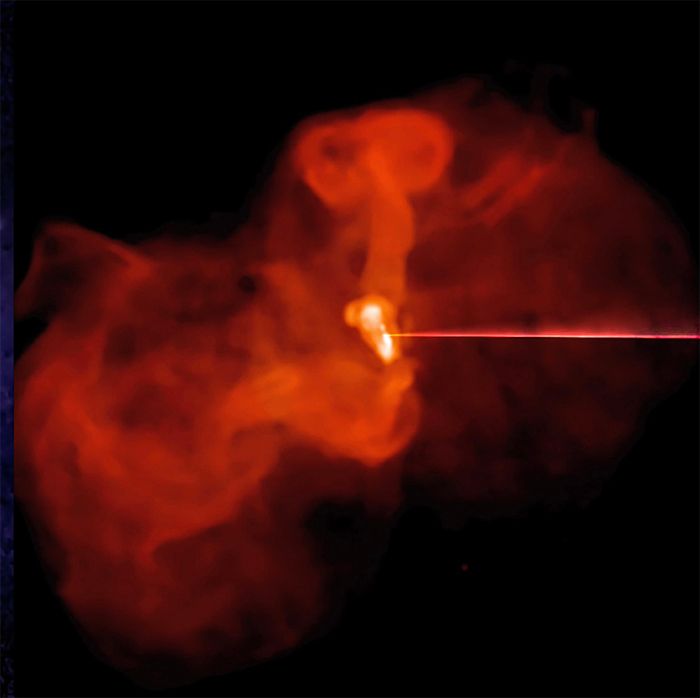
M87 Sonification
The giant black hole in Messier 87 (M87 for short) and its surroundings have been studied for many years and by a range of telescopes including Chandra (blue) and the Very Large Array (red and orange). This data shows that the black hole in M87 is sending out massive jets of energetic particles that interact with vast clouds of hot gas that surround it. To translate the X-rays and radio waves into sound, the image is scanned beginning at the 3 o’clock position and sweeping clockwise like a radar. Light farther from the center is heard as higher pitched while brighter light is louder. The radio data are lower pitched than the X-rays, corresponding to their frequency ranges in the electromagnetic spectrum. The point-like sources in X-ray light, most of which represent stars in orbit around a black hole or neutron star, are played as short, plucked sounds.
Access more information & file formats on this sonification
The Chandra sonifications were led by the Chandra X-ray Center (CXC), with input from NASA's Universe of Learning. The sustained collaboration was driven by visualization scientist Dr. Kimberly Arcand (CXC), astrophysicist Dr. Matt Russo and musician Andrew Santaguida (both of the SYSTEM Sounds project). For other sonifications, please see their linked pages.
cxcpub@cfa.harvard.edu
617-496-7941
60 Garden Street,
Cambridge, MA 02138 USA
Art Direction/Design: Kristin DiVona
Web Developers: Khajag Mgrdichian
& Kelly T.S. Williamson
Chandra X-ray Center, Operated for NASA by the Smithsonian Astrophysical Observatory. This site was developed with funding from NASA under contract NAS8-03060 | Privacy | Accessibility
Additional support from NASA's Universe of Learning (UoL). UoL materials are based upon work supported by NASA under award number NNX16AC65A to the Space
Telescope Science Institute, working in partnership with Caltech/IPAC, Jet Propulsion Laboratory, and Smithsonian Astrophysical Observatory.



